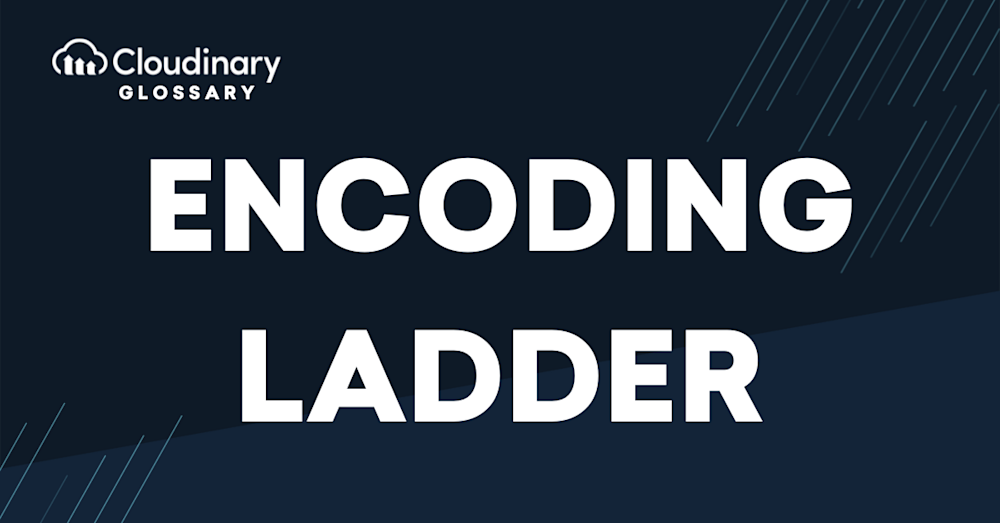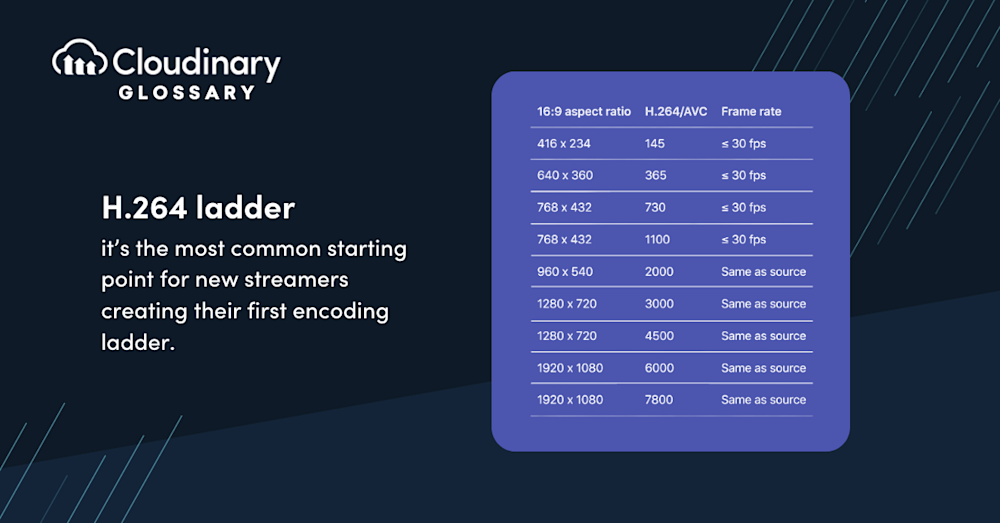What is an Encoding Ladder?
In its most straightforward form, an encoding ladder is a predefined set of video output specifications designed to accommodate users with varying devices and network conditions. At its core, it’s like a technical menu, with each level offering a different balance of resolution, bitrate, and codec parameters. These “rungs” of the ladder create versions of your video suitable for everything from high-speed internet on a 4K display all the way down to a basic mobile phone on a sluggish network.
In a broader context, the encoding ladder goes beyond just being a preset list of specifications. It forms an integral part of any adaptive bitrate streaming strategy. Adaptive bitrate streaming allows a streaming service to dynamically switch between different rungs of the ladder, ensuring uninterrupted playback while optimizing for the best possible quality under the viewer’s current conditions. It’s a mechanism that tailors the viewing experience based on real-time user environment analysis, underscoring the importance of crafting a well-thought-out encoding ladder for your content.
How To Implement Encoding Ladders for Video Optimization
Implementing an effective encoding ladder requires foresight, strategy, and continual adjustment informed by data. There isn’t a one-size-fits-all answer, but here are a few essential steps you can follow:
- Understand Your Audience. Determine the range of devices, internet speeds, and viewing conditions your users have. This may require some research or user data analysis.
- Select Your Rungs. Choose the number and characteristics of your output levels. H264 is a commonly used codec, while resolutions typically range from 360p for low-end consumption, up to 1080p or even 4K for high-end viewing.
- Optimize Your Encodings. Test various settings within your chosen rungs to find the best balance between quality and file size. This may involve tweaking factors like the bitrate, frame rate, or keyframe interval.
- Monitor & Adjust. Review performance metrics and user feedback to adjust your ladder over time as technology, network conditions, and user behavior evolve.
Remember, the goal is to provide the optimal viewing experience for each user based on their individual conditions, which necessitates a flexible and adaptable approach.
Utilizing Cloudinary for Effective Encoding Ladders
Crafting a balanced and efficient encoding ladder isn’t an overnight task – it requires an understanding of your audience, strategizing your rungs, optimizing encodings, and continually monitoring and adjusting your approach based on user feedback and emerging technological trends. Encoding ladders are an essential component of video optimization, enabling adaptive bitrate streaming and efficient bandwidth utilization. They allow for the delivery of optimal video quality based on the viewer’s device and network conditions.
Cloudinary is a powerful tool for creating and managing encoding ladders. Its advanced video encoding and optimization features allow content providers to easily generate and maintain hierarchical encoding ladders. With its advanced video management and adaptive bitrate streaming capabilities, Cloudinary simplifies the intricacies of delivering top-notch, device-appropriate video content. It also offers extensive analytic capabilities, helping you assess and finetune your strategy over time.
Don’t just meet your users’ expectations, exceed them with Cloudinary. Try it today and enjoy the power of sophisticated, data-driven video stream optimization at your fingertips.
Additional Resources You May Find Useful:



